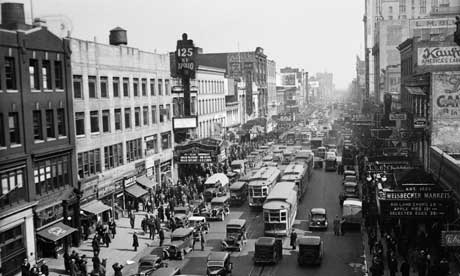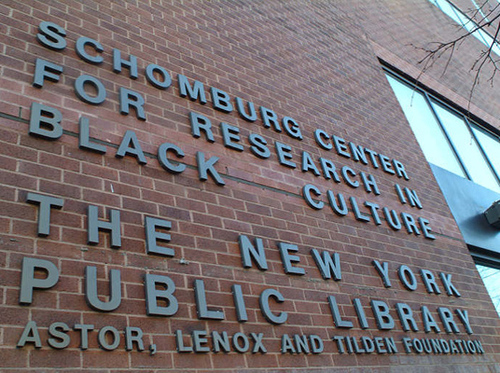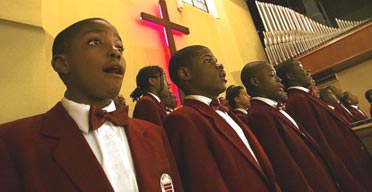About Our District
New York's Fifteenth District possesses a distinct character that derives from the area's rich and complex history, traditionally diverse population, and vibrant culture. The community merges icons of its illustrious past with symbols of Upper Manhattan's bright future – a place of national and international import and fame.
At the turn of the 20th century, Harlem, about 10 miles north of New York City's original hub, was an upscale suburb with a nearly all-white population. A steady influx of Blacks resulted in the establishment of a majority Black population by the early 1920s. This period, historically known as the Harlem Renaissance, marked a time of brilliant cultural and artistic growth and exposure, celebrating the Black experience. Harlem was the epicenter of Black culture in the pre-World War years.
One of the most famous historic landmarks on 125th Street is the Apollo Theater. Since it was originally built in 1914, the Apollo has hosted shows by a number of legendary performers, from Count Basie to Aretha Franklin.
Upper Manhattan is experiencing an economic revival that can be attributed to Federal Empowerment Zone legislation championed by Congressman Charles Rangel in the mid 1990s. The Upper Manhattan Empowerment Zone is a modern mirror to the Harlem Renaissance in economic terms. Through a matched-funds program designed to encourage investment and development, an area that was once economically depleted has been turned around. Indicators of the strong economic growth in terms of job opportunity, commercial expansion, and urban investment are visible wherever you look. Harlem USA, which established the viability of large-scale retail on 125th Street, includes retailers such as the Disney Store, Magic Johnson Theaters, HMV, and an Old Navy retail outlet. In addition, the large grocery franchise, Pathmark, opened a store at 125th Street & Lexington Avenue, another indicator of the strong level of investment in Upper Manhattan's future as a commercial marketplace.
El Museo del Barrio is one of the premier institutions in the country showcasing Latino visual arts. El Museo was founded in 1969 by a group of Puerto Rican educators, artists, and community activists, envisioning an institution that would reflect the richness of their culture. Thirty years later, as New York City's only Latino museum dedicated to Puerto Rican, Caribbean, and Latin American art, El Museo retains its strong community roots as a place of cultural pride and self-discovery through a number of community outreach programs, and simultaneously projects itself nationally through exciting exhibitions and programs.
The Schomburg Center for Research in Black Culture is a national library which contains over 5,000,000 items and resources documenting the experiences of people of African descent throughout the world. These collections include art objects, audio and video tapes, books, manuscripts, motion picture films, newspapers, periodicals, photographs, prints, recorded music discs, and sheet music. The Center's collections first received international acclaim when the personal collection of the Center's founder, Arturo Alfonso Schomburg, was added to the Division of Negro Literature at the 135th Street Branch of The New York Public Library in 1926. Mr. Shomburg served as curator of the collection from 1932 until his death in 1938. In 1940, the collection was renamed in his honor. The collections at the Schomburg Center have grown and accumulated a number of cultural artifacts over the years, which, along with its services and programs, are used by researchers and citizens from the United States and abroad.
Harlem Live is a Web site designed and operated by a group of teens who live in Harlem in New York City. The purpose of the Web site is to broaden youths' views of the world through the use of technology and journalism while fostering understanding through diversity. One of the group's main goals is to provide youth of color with the tools necessary to become productive, creative, and thoughtful leaders of today and responsible caretakers for the future. Production and maintenance of the Web site offers invaluable computer and journalistic experience to New York City teenagers. The teens use emerging technologies to cover and discuss current events, people and issues throughout Harlem, and touch upon items of interest in other New York City neighborhoods.
Incorporated in 1975, the Boys Choir of Harlem has grown from a small church choir to a major performing arts institution. The world renowned choir tours over 100 dates a year and appears regularly on network television and in movies. Dr. Turnbull, the Choir's founder, started the choir because he saw the need to provide alternative activities for the children of Harlem. In 1995, the Boys Choir of Harlem and Unencumbered Entertainment Group formed the 127th Street Records label. Under the group's direction, the Boys Choir of Harlem entered the world of mainstream R&B with its first album under the 127th Street label titled, "Up in Harlem".
With a thriving culture and personality all its own, East Harlem adds an entirely new dimension to the character of New York's Fifteenth. Primarily Puerto Rican, the area is rich with Latino cultural influence and representative of the famous 'Nuyorican' culture (combining the best of Puerto Rican and New York character and history). On the first Saturday of June, residents of East Harlem enjoy the sites and sounds of the Puerto Rican Day Parade. Onlookers watch as large floats, big bands, and dancers march down 3rd Avenue in celebration of Puerto Rican pride, culture, and heritage. The parade starts at 106th street and ends on 116th. New York's top radio station, Hot 97.1 FM, also provides entertainment for the crowd by inviting celebrities to perform during the pre-parade festivities. On Sunday, thousands of New Yorkers from every borough gather on 42nd Street and 5th Avenue to march in the annual Puerto Rican Day Parade. The parade, running from 10:00 AM to 5:00 PM, starts on 42nd and Fifth Avenue and concludes on 86th Street and York Avenue.
In September, African Americans gather along Lenox Avenue to enjoy the festivities associated with the African American Parade. The parade starts on 110th and Lenox and runs for about a mile. Crowds enjoy lively performances by professional marching bands and celebrities who ride through the parade on the Hot 97.1 FM float. The parade recognizes the achievements of African American police officers and health care workers who serve in black communities throughout the City. Public officials and community leaders participate in the day's festivities.
The East Harlem Tutorial Program, which began as an after-school program for children in East Harlem in 1948, has flourished into a full-time center dedicated to providing academic support for families and children in East Harlem. The after-school program provides free tutoring and mentoring sessions for students of age 6-19. Students receive one-on-one tutoring from tutors representing a variety of backgrounds. The Center also provides advance computer training for students and their families. The Tutorial Internship Program is a youth development program that prepares students of age 13-19 with crucial life skills, as well as educational, mentoring, and vocational/employment opportunities. Students develop these skills through weekly workshops where they meet and interact with guest speakers; participate in cultural, recreational, and educational trips; and receive health education, career and college preparation, and counseling. Other support services and programs include: The Young Adolescent Program for children of age 10-12; Summer Day Camp; a Media/Technology Education Program; social work and family support services; and community building.
One of the most well-known restaurants in all of New York City is nestled in the Fifteenth: the world famous Sylvia's Restaurant, located on Lenox Avenue in Harlem. Sylvia's captures many of the characteristics that define Harlem as a neighborhood — the delicious food, the friendly atmosphere, and a rich history in its own right. The Lenox Avenue location has succeeded in ways no one thought was possible when it opened in 1962. Today, Sylvia's has opened a franchise in Atlanta, GA, and plans to open more in Texas, Kansas, Illinois, California, South Carolina, and Paris, France. What's the secret to Sylvia's success? Sylvia Woods, a true entrepreneur extraordinaire and the billed 'Queen of Soul Food,' claims that it's a combination of talent, dedication, family support, and an absolutely delicious product. Sylvia's serves its patrons good southern cooking, with a dash of Sylvia's secret seasoning.






